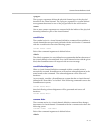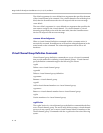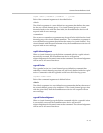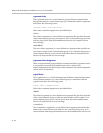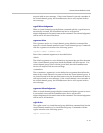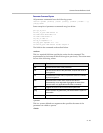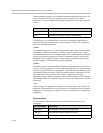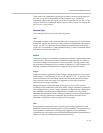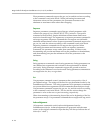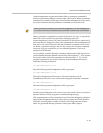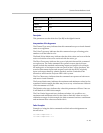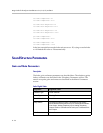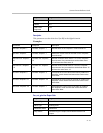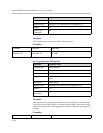
Command Protocol Reference Guide
A - 25
Thus, read-write commands support the get and set actions and support the
inc, dec, or tog actions depending on the parameter type. Read-only
commands support the get action, but do not support the set, inc, dec, or tog
actions. Write-only commands support the set action, but do not support the
get, inc, dec, or tog actions.
Parameter Types
All commands fall into one of the following types.
Void
Commands to adjust void parameters that take no arguments. Void parameter
commands support the set action. Void parameter commands do not support
the get, inc, dec, or tog actions. Void parameter commands must always be
write-only. An example of a void command is the sys_reboot command, which
performs a software reset when set.
Boolean
A Boolean parameter command’s argument is an integer argument that must
be either 0 or 1. Boolean parameter commands support the get, set, and tog
actions according to the command’s read-write mode. The tog action causes
the parameter to change state (for example, 0 changes to 1, and 1 changes to 0).
Boolean parameter commands do not support the inc and dec actions.
Integer
Integer parameter commands control integer-valued parameters with values
in the range of -2,147,483,648 (-2^31) to 2,147,483,647 (2^31 - 1), inclusive. The
specific command will most likely impose minimum and maximum limits
more restrictive than this range. The argument to an integer parameter
command is an integer argument.
Integer parameter commands support the get, set, inc, and dec actions
according to the command’s read-write mode. Integer parameter commands
do not support the tog action. Integer parameter commands may also support
user-definable minimum and maximum limits in addition to the system
minimum and maximum limits. When performing increment and decrement
actions on integer parameter commands, the parameter saturates at the
minimum or maximum value (as opposed to wrapping).
Float
Float parameter commands control floating point valued parameters with
minimum and maximum limits specific to each command. The argument to a
float parameter command is a floating-point argument. Float parameter
commands may also support user-definable minimum and maximum limits in
addition to the system minimum and maximum limits.



